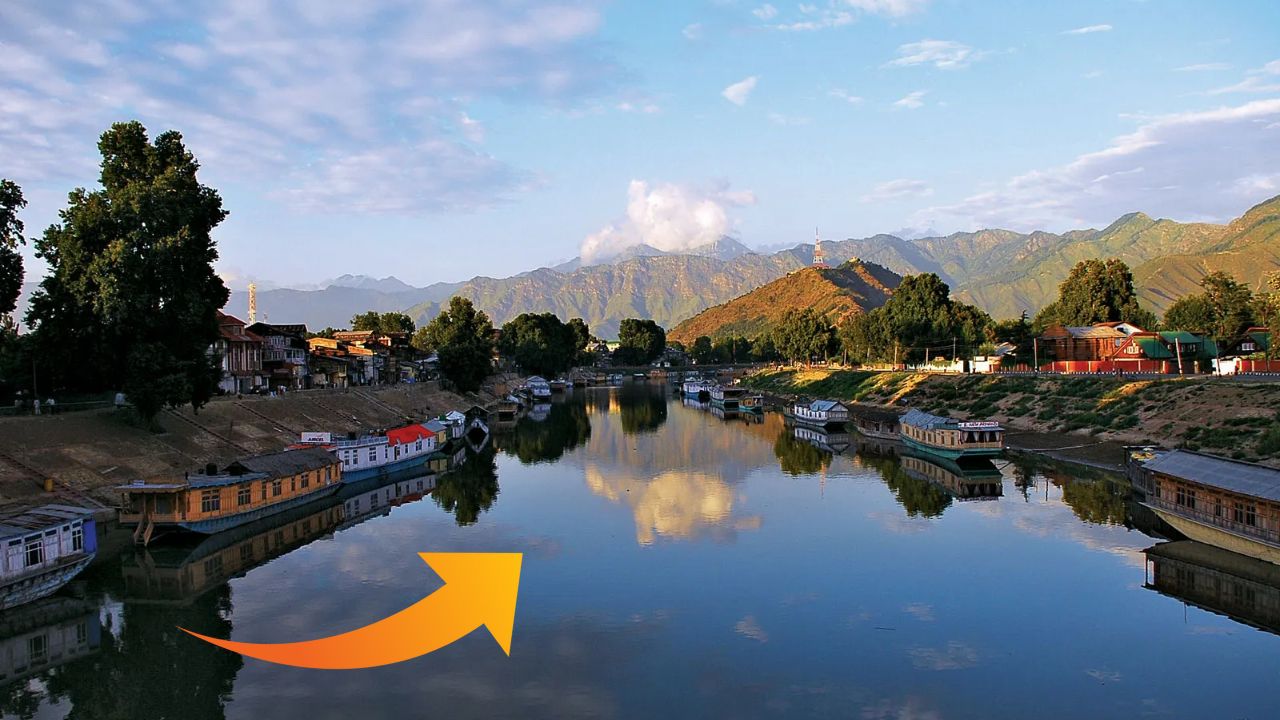The Jhelum River, an integral part of the Indus River system, is not just a water body; it is a carrier of culture, history, and life. Originating in the pristine valleys of Kashmir and flowing through breathtaking landscapes before merging into the mighty Indus, the Jhelum has been a lifeline for millions and a silent witness to centuries of civilization. In this article, we delve into the origin and end of the Jhelum River, exploring its journey through different regions, its significance, and the challenges it faces today.
Origin of the Jhelum River
The Jhelum River originates from Verinag Spring located in the Anantnag district of Jammu and Kashmir, India. Verinag is nestled at the foot of the Pir Panjal range and is considered one of the most picturesque and historically significant places in Kashmir. The spring emerges from the base of a hill and is encased in a beautifully crafted Mughal-style octagonal stone basin built by Emperor Jahangir in the early 17th century.
From Verinag, the river flows northwest, passing through various towns and valleys of the Kashmir Valley. The river gains momentum as it travels through towns like Anantnag, Srinagar, and Baramulla. Srinagar, the summer capital of Jammu and Kashmir, is especially notable as the river flows majestically through its heart, adding to the city’s charm and providing water for agriculture and domestic use.
Course of the Jhelum River
After flowing through Srinagar and Wular Lake (one of the largest freshwater lakes in South Asia), the Jhelum River continues its journey towards Baramulla and Uri before crossing the Line of Control and entering Pakistan-administered Kashmir. Here, the river flows through Muzaffarabad, the capital of Azad Jammu and Kashmir, where it is joined by its major tributary, the Neelum River.
From Muzaffarabad, the Jhelum moves further southwest into the plains of Punjab province in Pakistan. It is at this stage that the river begins to show its importance as an agricultural lifeline. The river enters the Jhelum District and continues flowing through the heart of Punjab, irrigating vast farmlands along its way.
Tributaries of the Jhelum River
The Jhelum River is nourished by several important tributaries during its journey:
-
Lidder River: Originates from the Kolahoi Glacier and joins the Jhelum near Anantnag.
-
Sind River: Originates from the Zojila Pass and meets the Jhelum near Shadipora.
-
Neelum (Kishanganga) River: This is the most significant tributary and joins the Jhelum at Muzaffarabad.
-
Poonch River: Flows through the Poonch district and joins the Jhelum in Pakistan-administered Kashmir.
Each of these tributaries plays a crucial role in maintaining the river’s flow and volume, especially during the melting of snow in spring and early summer.
Dams and Barrages on the Jhelum
To harness the water potential of the river, several dams and barrages have been constructed both in India and Pakistan:
-
Mangla Dam: Located in the Mirpur District of Pakistan-administered Kashmir, this is the largest dam on the Jhelum River and the second-largest in Pakistan. It plays a critical role in power generation and irrigation.
-
Uri Hydroelectric Project: Situated near the town of Uri in Jammu and Kashmir, India, this is a major source of hydroelectric power.
-
Lower Jhelum Hydroelectric Project: Located near Baramulla, this helps in electricity generation and regulating the flow of water.
These projects are vital for regional development but have also been subjects of controversy due to water sharing agreements between India and Pakistan, primarily governed by the Indus Waters Treaty of 1960.
The End of the Jhelum River
The Jhelum River eventually ends its journey by merging into the Chenab River near Trimmu in the Jhang District of Punjab, Pakistan. This confluence marks the end of the river’s independent flow. After joining the Chenab, the combined waters eventually flow into the Sutlej River and finally merge into the Indus River, which then travels down to the Arabian Sea near Karachi.
Thus, while the Jhelum is not an end river itself, it plays a critical role in feeding the larger Indus River system, which is among the longest river systems in Asia.
Historical and Cultural Significance
The Jhelum River has immense historical and cultural importance. Known as Vitasta in ancient Hindu texts, the river is revered in the Rigveda and Mahabharata. The river also played a significant role in Alexander the Great’s campaign in India. The famous Battle of the Hydaspes was fought between Alexander and King Porus near the Jhelum in 326 BCE.
Throughout the centuries, the river has nourished countless civilizations, supported trade and travel, and inspired poets and writers. Cities like Srinagar and Jhelum owe much of their development and culture to the river’s presence.
Environmental Challenges
Despite its beauty and significance, the Jhelum River faces numerous environmental threats:
-
Pollution: Urban waste, agricultural runoff, and industrial discharges have severely affected the water quality, particularly in densely populated areas.
-
Encroachment and Sand Mining: Unregulated construction and mining activities along the riverbanks disturb the natural flow and degrade the ecosystem.
-
Climate Change: Altered precipitation patterns and melting glaciers are leading to unpredictable flows—causing floods during monsoons and droughts in summer.
Efforts by environmentalists, NGOs, and government bodies are ongoing to rejuvenate the river, but more collaborative and sustained actions are needed to restore its health.
Read More: Indus River is where to start and Where to End
Conclusion
The Jhelum River, beginning from the serene Verinag Spring and ending in the powerful embrace of the Chenab River, is more than a geographical entity—it is a symbol of continuity, resilience, and shared heritage. As it meanders through the mountains and plains, the Jhelum carries with it stories of ancient legends, the aspirations of farmers, and the spiritual depth of civilizations that have depended on it for millennia.
Preserving the Jhelum is not just about saving a river; it’s about protecting a legacy. From its icy origins to its tranquil merging with the Chenab, the Jhelum continues to be a river of life—and with care, it can continue to flow strong for generations to come.

